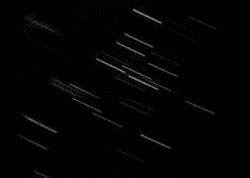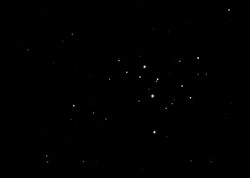Drift integration software, sometimes called image stacking software, re-aligns the images that have drifted when captured by a web cam.
Drift integration is a technique used in digital astrophotography to capture high-quality images of celestial objects. Unlike traditional methods that rely on precise tracking of stars, drift integration leverages the natural motion of the night sky caused by the Earth’s rotation. The process involves allowing the stars to drift across the camera’s field of view while capturing a series of images over time.
Key components of drift integration include selecting a stable mount, careful calibration, and using specialized software to align and stack the individual frames. By compensating for drift and stacking multiple exposures, astrophotographers can achieve a higher signal-to-noise ratio, reducing noise and enhancing details in the final image. This method is particularly useful for capturing deep-sky objects, such as galaxies, nebulae, and star clusters.
The article also explores the benefits of drift integration for astrophotographers who may not have access to expensive, high-precision tracking equipment. The technique offers a practical alternative that still yields stunning results, though it requires patience and careful planning. Finally, the article touches on the challenges of drift integration, such as managing field rotation and the potential need for longer exposure times.
Because the Earth is turning objects drift across the night sky. Traditionally expensive tracking telescope mounts are used to keep objects centered in the telescope. Drift Integration allows you to shoot with a stationary mount and then re-align the images when integrating the frames.
The sensor in a web cam is a grid of transistors that collect light. Every fraction of a second the camera captures another image. If you point your telescope with web cam attached towards the sky to capture an image of an object, the earths rotation will cause that object, and the surrounding stars for that matter to move across the field of view. Drift integration software uses image comparison to re-align images. Drift integration will use a point in the field and re-align the next frame so that that point is in the same grid box as the previous frame. This means your telescope mount does not have to be as accurate as when you do not use drift integration software. You will still need to track for long exposures or part of the image will move out of the frame.
Here is an image that was created from stacked without using drift integration

Here is an image that was created from stacked and then using drift integration

In conclusion, drift integration is a valuable tool in digital astrophotography, offering a cost-effective and efficient way to capture detailed images of the night sky.
Here are some popular software packages that include drift integration
- APT: Astrophotography Tool A Swiss army knife for astro imaging sessions
- NINA: Nighttime Imaging 'N' Astronomy: An astrophotography imaging suite
- Sequence Generator Pro: A fully automated night sky imaging tool
Voyager: A user-friendly system integration and astrophotography automation software - Registax: A popular image processing software for planetary and lunar imaging It can align and stack multiple images of celestial objects to create a high-quality final image
- Log in to post comments
